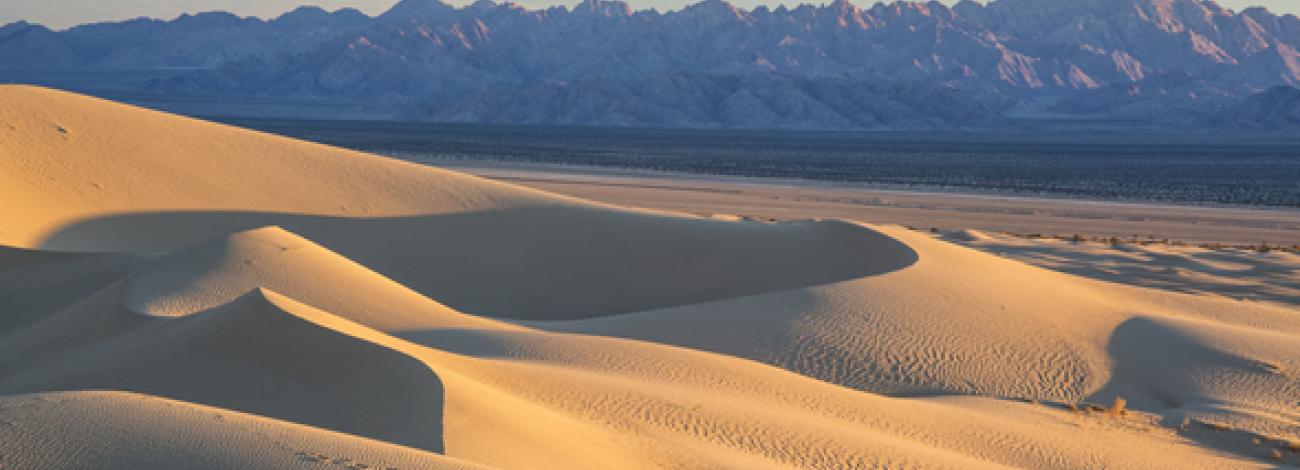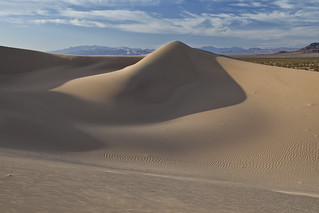
Mojave Trails National Monument
The Mojave Trails National Monument spans 1.6 million acres of federal lands, including more than 350,000 acres of already Congressionally
SAFETY
Safety
Many portions of the Mojave Trails National Monument are remote and challenging. You cannot always depend on a signpost or a ranger to get you out of a fix. Bring appropriate equipment so you can be prepared for weather changes and can take care of yourself, if necessary, overnight.
- High Clearance 4x4s are strongly recommended for all unpaved (and some paved) roads within the Monument. Road conditions can change dramatically as a result of storms.
- Don’t rely on electronic navigation. Some map services may direct you on routes that require high-clearance 4x4s or are closed. Know where you are going and how to get there.
- Do not recreate alone. Or leave an activity plan with friends and/or family that detail where you will be and when you expect to return.
- Have a communication plan. Cellphones do not get signal in all parts on the National Monument; a radio, personal locator beacon, satellite phone, or signaling mirror can be crucial in a time of need.
- Carry and drink as much water as you can. At least one gallon per person per day is recommended. When half of your water is gone, turn around and head back.
- Protect yourself from the sun. Dress in layers. Wear a hat, sunglasses, protective clothing, and sturdy footwear. Use sunscreen. Bring warm layers and a waterproof shell on longer hikes – the weather can change quickly.
- Know your route. Carry a map and pay attention to the terrain so you can find your way back.
- Beware of dangerous flora and fauna. Watch where you put your hands and feet. Cacti, ocotillo, rattlesnakes, and bees (to name a few) may pose danger to visitors.
- Keep children near you and stay on the trail.
CULTURAL RESOURCES
Cultural Resources
Mojave Trails National Monument was designated to conserve, protect and restore nationally significant cultural resources. You might encounter things like a stack of rocks (called cairns) or a line of rocks. These items were placed here for specific purposes and may be of cultural significance. Moving rocks or creating your own rock alignments interferes with the BLM’s ability to protect these significant features for future generations. Help share Mojave Trails National Monument by obeying the Leave No Trace principle of Leave What You Find.
ROCKHOUNDING AND FOSSIL COLLECTING
Rockhounding and Fossil Collecting
Rockhounding and invertebrate fossil collecting are family activities that have occurred in the Mojave Trails area for more than 100 years. Please follow BLM’s casual use regulations when collecting in the Monument.
Additional information on the Marble Mountains trilobite fossils.
Watch the Rockhounding in the Mojave Trails National Monument video:
RESEARCH PERMITS
Research Permits
Mojave Trails National Monument provides opportunity for scientific discovery that stretch from underground to outer space! Before you conduct your next project, contact the BLM to see how your research can help improve the management of this magnificent area.
CAMPING
Camping
Developed Camping
As of April 10, 2019, Mojave Trails National Monument is under Stage II fire restrictions. Campfires are only allowed within approved fire pits and grills provided in developed recreation sites (Afton Canyon). Rock ring campfires are NOT allowed. Controlled flame devices will need a California Campfire Permit.
Afton Canyon Campground offers 22 developed campsites and a group campsite. Campsites offer picnic tables, shade structures, restrooms and trash receptacles. Afton Canyon is a great weekend getaway, a location to stay at the start or end of your Mojave Road adventure, or a nice midway stop between Las Vegas and Los Angeles. The access road is generally passable with passenger cars until the campground, after that, high-clearance 4x4s are required to continue along the route. The only camping allowed in Afton Canyon is at the developed campsite, in order to protect sensitive resources in the canyon.
Dispersed Camping
Dispersed camping is permitted on all BLM lands within the National Monument, except in the Afton Canyon Area of Critical Environmental Concern and the main Amboy Crater parking lot. Campers may occupy a single site for a maximum of 14 days, and then move to a new location at least 25 miles away. Campsites must be at least 1/4 mile from wildlife water sources, whether natural or human-created. Camping in previously disturbed sites is encouraged. Permits and fees are not required for dispersed camping on BLM lands.

